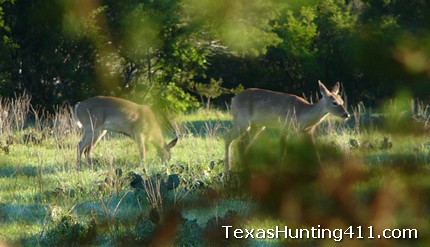Whether it be a white-tailed deer, bobwhite quail or other animal species, the fact is that wildlife have a certain requirement for cover. Suitable cover can only be provided through habitat. Cover provides a sense of security from disturbance and protection from inclement weather and predators. The amount and kind of cover vary by species. A stand of grass may provide adequate cover for some bird species and small mammals, while other species require woody cover comprised of trees and shrubs, maybe even in addition to herbaceous cover.
The best cover for a large species such as white-tailed deer is a pattern or mosaic of woody brush and trees interspersed within open areas at an approximate 1:1 or 2:1 ratio of open area to woody cover. Clumps or strips of brush should be wide enough so that an observer cannot see through them from one side to the other during the winter months when deciduous species are bare of leaves. Cover strips should be as continuous as possible to provide travel corridors for deer movement. A habitat that provides several different types and arrays of cover benefits more species of wildlife than a habitat that has limited types, amounts, and distribution of cover.

Management of vegetation, whether post oak woodlands, ashe juniper woodlands, mesquite woods, or open grasslands, requires long-term planning. Any habitat manipulation practice will have an impact on resident wildlife species, either good or bad, depending on the type of treatment used, the degree of use, and location. Before implementing vegetation control techniques, determine what the long-term effects will be for each wildlife species that occurs in the area and minimize the negative impacts.
Landowners and hunters must consider the location and size of sensitive wildlife habitats that provide important nesting or roosting sites, feeding areas, desirable wildlife food producing plants, cover, water, and space needs. Wildlife can be displaced by disturbance from an area without adequate escape or security cover, so wildlife management initiatives should aim to meet both short and long-term needs. The amount and distribution of cover on adjacent lands need to be taken into consideration when assessing the cover needs of wide-ranging wildlife species such as deer and turkey.
For example, a small ranch would need a larger amount of security cover on a percentage basis than would a larger ranch where the vastness of the area provides large-ranging species with the security the need. The amount and types of cover habitat that wildlife need varies by species, so the best habitat for deer may not necessarily be the best habitat for doves. With that said, often times good diverse habitat will benefit many wildlife species since each can find a suitable place to call home.